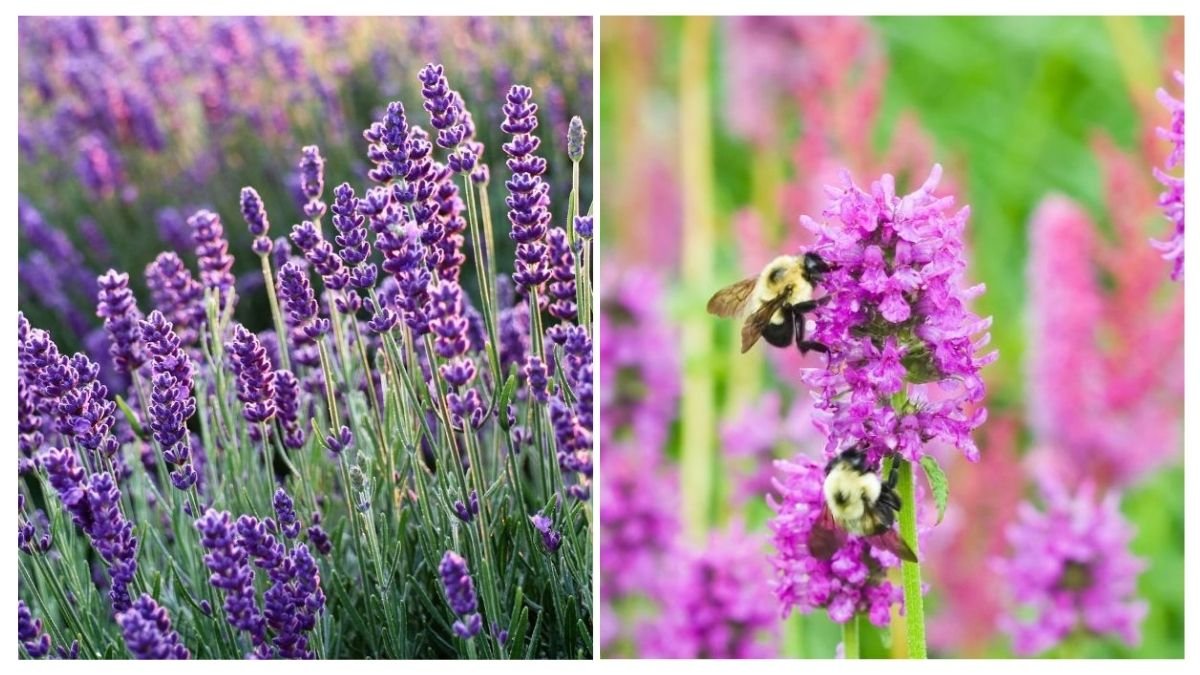If you struggle to keep your rock garden alive this summer, it’s not just you. Many gardeners battle with scorching sun or persistent shade, watching helplessly as plants wither in the wrong spots. But your rocky landscape can flourish no matter where the sunlight falls.
Visualise a vibrant tapestry of blooms and foliage that blooms even in harsh conditions. Think of cascading succulents that flourish in baking heat, shade-loving perennials that brighten dark corners, and rugged groundcovers that tie it all together effortlessly. No more hard work, just resilient plants that work where others fail.
We’ve handpicked 15 stunning rock garden plants that thrive in sun and shade. From drought-defying ice plants to metallic-hued ferns, these picks deliver color, texture, and year-round interest with zero fuss. Let’s get ready to transform your problem spots into showstoppers.
15 Stunning Rock Garden Plants That Thrive in Sun or Shade This Summer
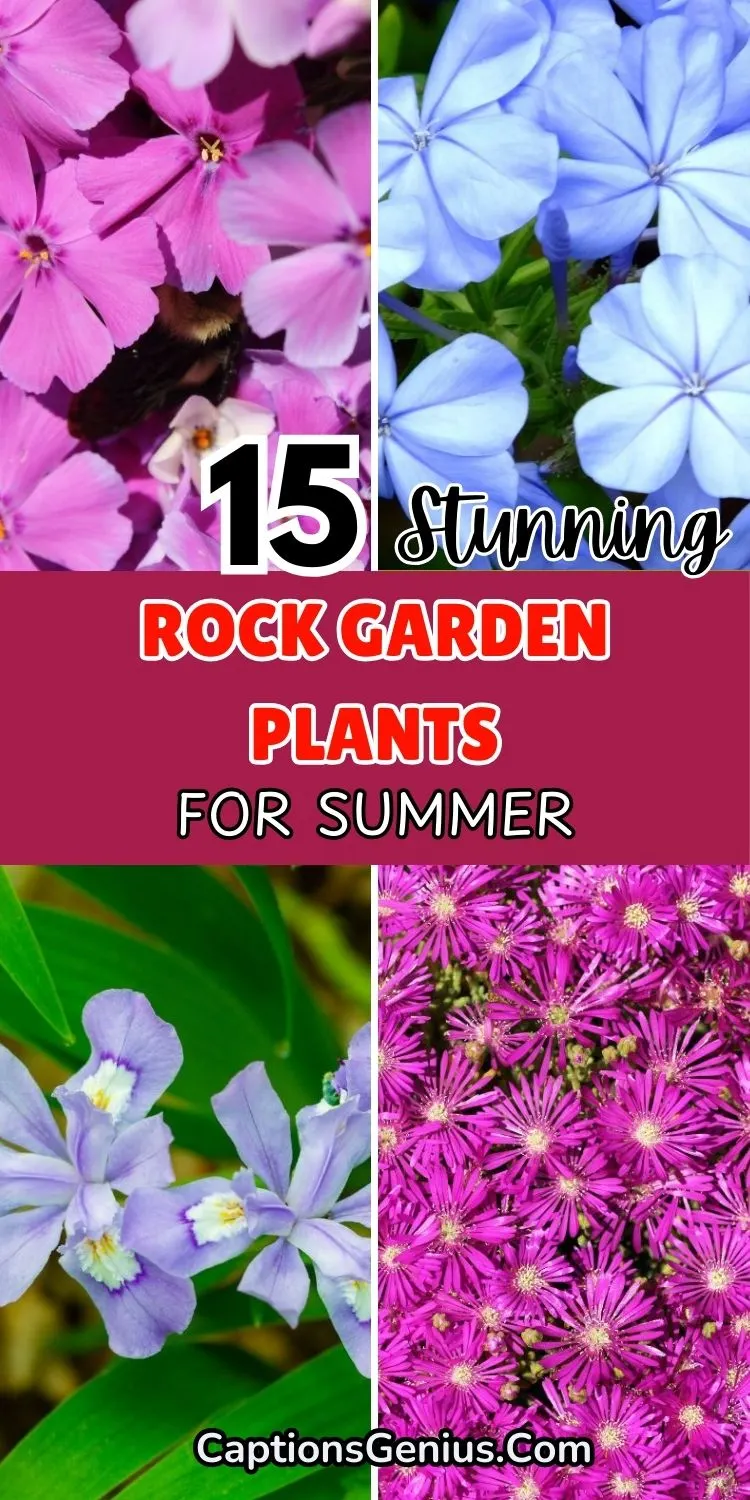
1. Ice Plant
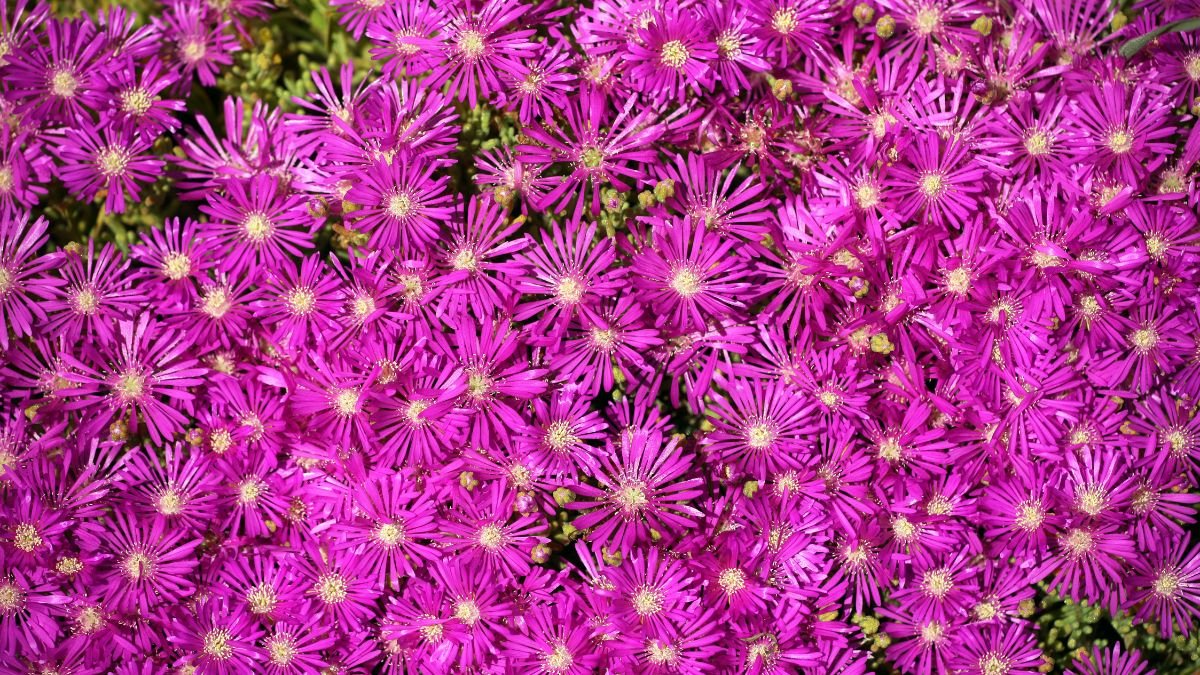
The ice plant is a tough succulent built for heat, brightening up rock gardens with vivid pink, yellow, or purple flowers. Its fleshy leaves store water, making it drought-resistant once planted. While it loves full sun, it won’t wilt in light shade, especially in hotter climates where afternoon shelter helps.
This low-growing spreader blooms from spring to fall, attracting pollinators like bees and butterflies. The flowers close at night but reopen with sunlight, adding dynamic color shifts to the garden. Plant it in well-draining soil, as soggy roots lead to rot.
Gardeners in dry regions appreciate its strength. It handles poor soil, slopes, and even coastal conditions with ease. For extra impact, pair it with contrasting textures like ornamental grasses or spiky yucca.
2. Corsican Stonecrop
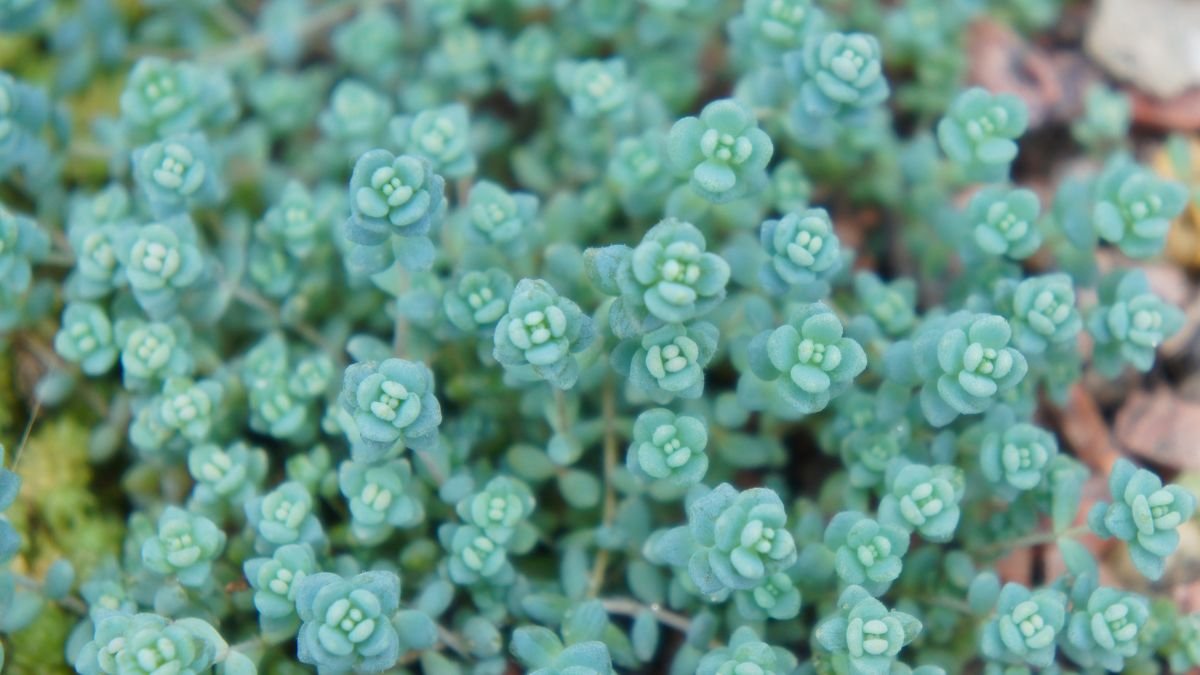
A delicate-looking but tough groundcover, Corsican stonecrop forms a dense mat of blue-gray leaves. Tiny white or pink flowers appear in summer, though the foliage alone adds year-round interest. It spreads steadily, filling gaps between rocks without becoming intrusive.
Full sun brings out its best color, but it adapts to dappled shade, making it adaptable for tricky spots. Unlike thirstier plants, this sedum prospers on neglect, needing little water once planted.
Rock gardens, crevices, and container edges benefit from its trailing habit. It also works as a living mulch, suppressing weeds while requiring no mowing or pruning. For a striking combo, plant it near darker foliage like black mondo grass.
3. Hens-and-Chicks
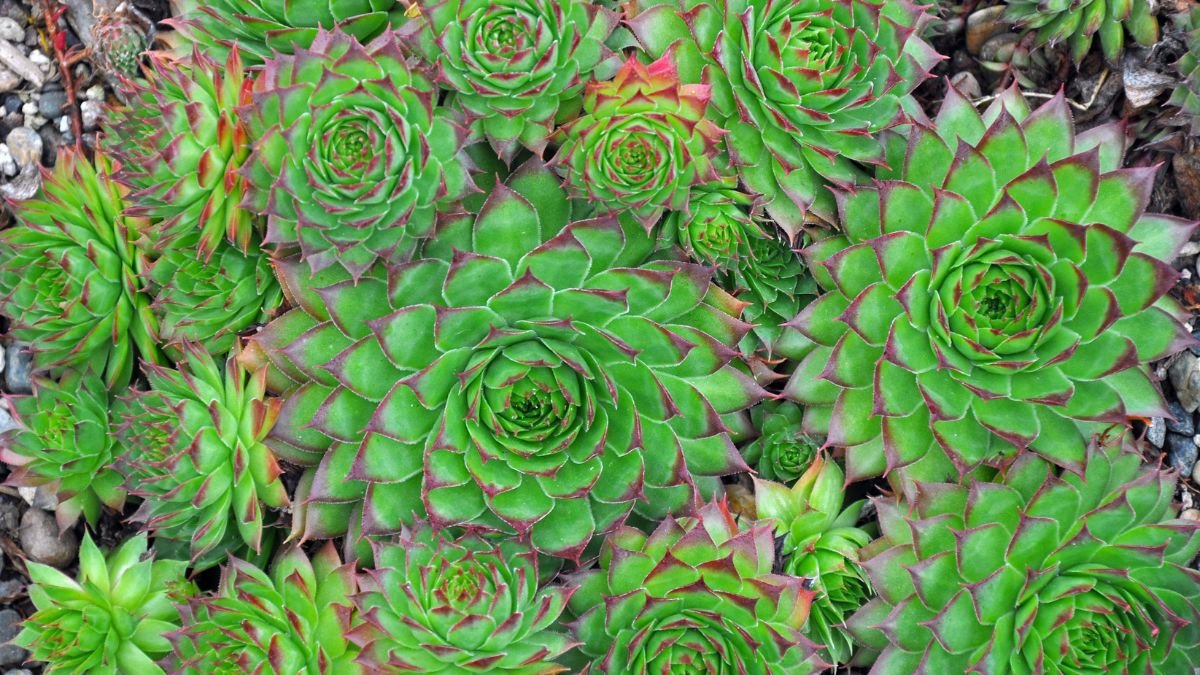
Hens-and-chicks add sculptural appeal to rock gardens with rosettes that resemble artichokes. They multiply by producing “chicks” around the mother plant, creating a colony over time. Sun boosts tight growth and rich hues, but they tolerate partial shade, especially in scorching climates.
These succulents outlive freezing winters and dry summers, making them nearly invincible. Their shallow roots cling to rocky soil, and they rarely need fertilizing. Some varieties blush red or purple in bright light, while others stay a muted green.
Use them in vertical gardens, between pavers, or in hypertufa planters. Their adaptability and low maintenance make them a favorite for beginners and experts alike.
4. Foamflower
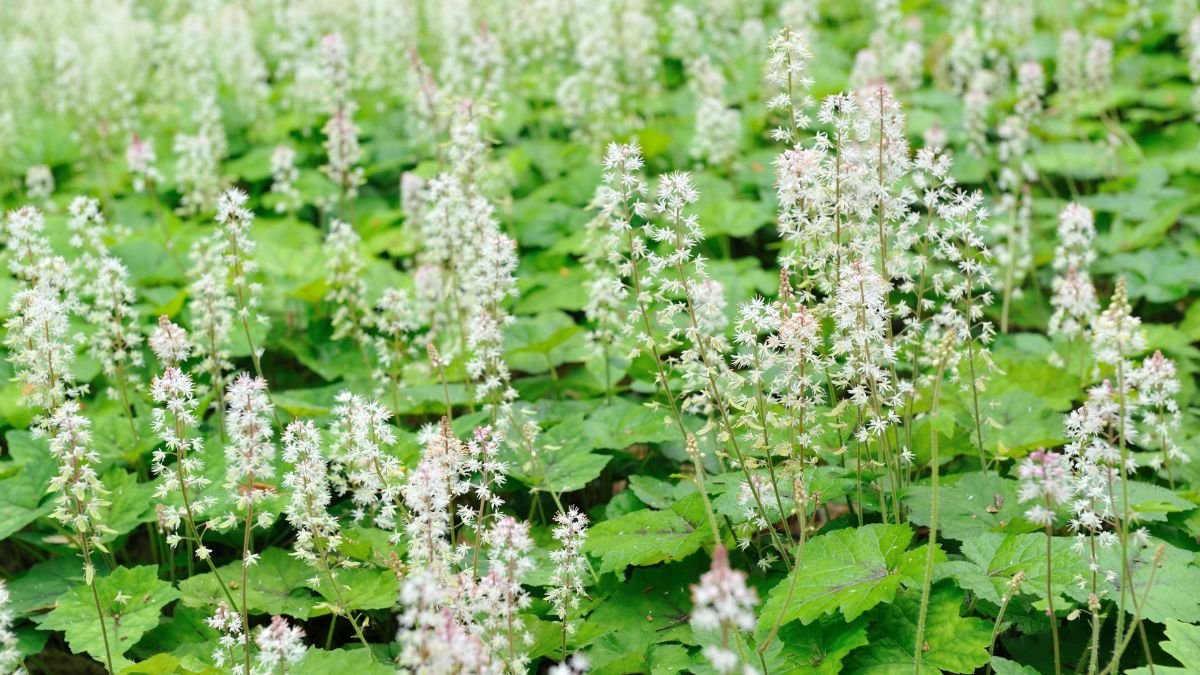
Delicate white or pink flower points rise above heart-shaped leaves on this shade-loving perennial plant. While it prefers partial to full shade, morning sun improves blooming without scorching the foliage. The blooms resemble frothy foam, giving it its whimsical name.
Unlike many shade plants, foamflower spreads steadily but not aggressively, forming a lush groundcover. It blossoms in moist, humus-rich soil, making it a good fit for woodland rock gardens. Some varieties feature striking leaf veining, adding texture even when not in bloom.
Pair it with ferns or hostas for a layered look. Deer tend to avoid it, and pollinators appreciate its spring flowers.
5. Dwarf Crested Iris

Petite but eye-catching, this iris blooms in early spring with lavender-blue flowers marked with white and gold. Though it favors shade, it handles morning sun if the soil stays moist. The sword-like foliage remains tempting long after flowering.
Spreading slowly via rhizomes, it naturalizes beautifully in rocky slopes or under trees. Unlike taller irises, it stays compact, rarely exceeding six inches in height.
Plant it where its delicate blooms can shine, near paths or at the front of borders. It’s also a great choice for erosion control on shady banks. Once set, it requires little care beyond occasional division.
6. Rock Soapwort
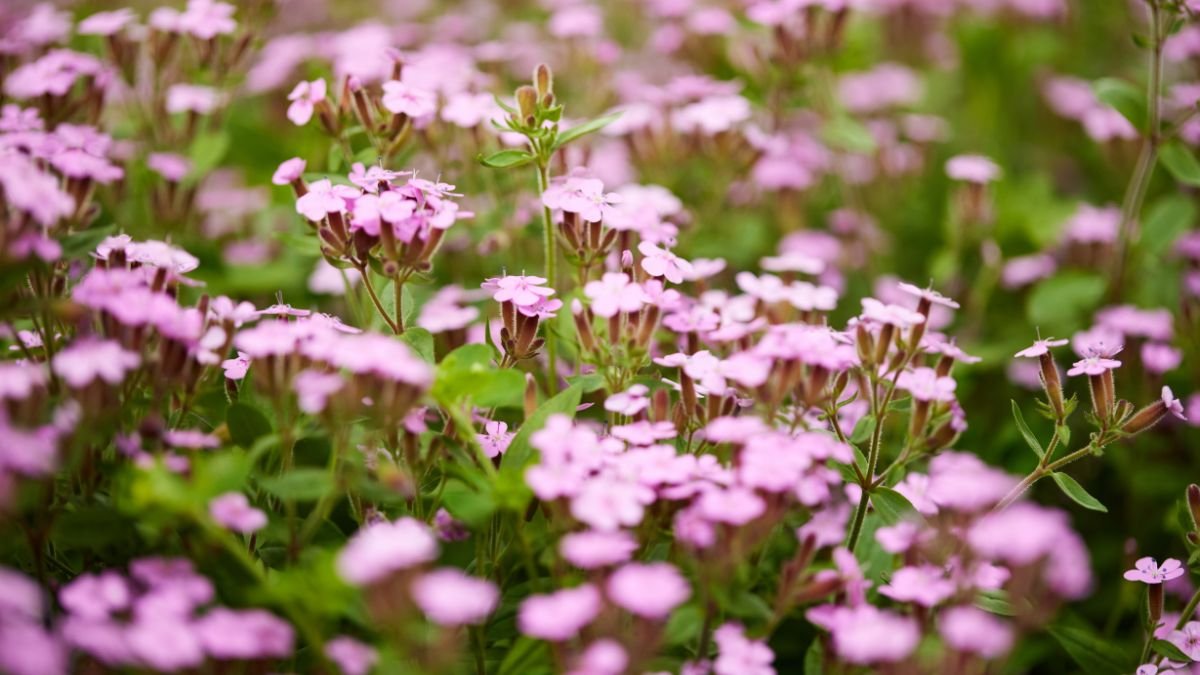
Few plants cascade over rocks as gracefully as rock soapwort. In late spring, it bursts into a carpet of star-shaped pink flowers that last for weeks. While it prospers in full sun, it manages just fine in light shade, particularly in hotter climates where afternoon relief prevents scorching.
The stems spill outward, making it excellent for softening the edges of stone walls or draping over containers. Once planted, it handles drought better than most flowering groundcovers. Well-draining soil is key, as this plant hates wet feet.
Gardeners love it for its low maintenance. No deadheading is needed, and it rarely suffers from pests. For a striking contrast, pair it with silver-leaved plants like lamb’s ear.
7. Alpine Betony

Alpine betony sends up sturdy spikes of vibrant purple flowers in midsummer, taller than many rock garden plants. The buds attract bees and butterflies, while deer usually leave them alone; that is a win for wildlife-friendly gardens.
Full sun prompts the most prolific flowering, but it holds up well in partial shade, too. The dark green, crinkled leaves form neat clumps that stay attractive even when not in bloom. Unlike some perennials, it doesn’t flop or need staking.
This tough plant handles clay soil better than most, though it prefers decent drainage. Use it as a vertical accent among lower-growing sedums or creeping thyme.
8. Dwarf Plumbago

When summer flowers start fading, dwarf plumbago steps in with electric blue blooms that pop against its reddish stems. The color strengthens as temperatures cool in early fall. While it prospers in the sun, it’s one of the few blue-flowered plants that performs in shade too.
The foliage turns bronze-red in autumn, extending seasonal interest. Spreading slowly by rhizomes, it fills spaces without becoming invasive. Dry spells don’t disturb it once set, though it appreciates occasional water during prolonged heat.
Tuck it between rocks or let it spill over edges. It pairs beautifully with golden sedum or ornamental grasses for contrast.
9. Moss Phlox

Moss phlox blankets the ground in pink, white, or purple flowers in early spring, so dense you can barely see the foliage. The needle-like evergreen leaves form a mat that stays green year-round in softer climates.
Sun lovers at heart, these plants accept light shade, though blooming may be less dazzling. They flourish in poor, rocky soil where other plants struggle. After flowering, a light trim keeps them neat and encourages fresh growth.
It is perfect for slopes or cascading over retaining walls, it also resists erosion. Combine them with spring bulbs like miniature daffodils for a layered look.
10. Coral Bells
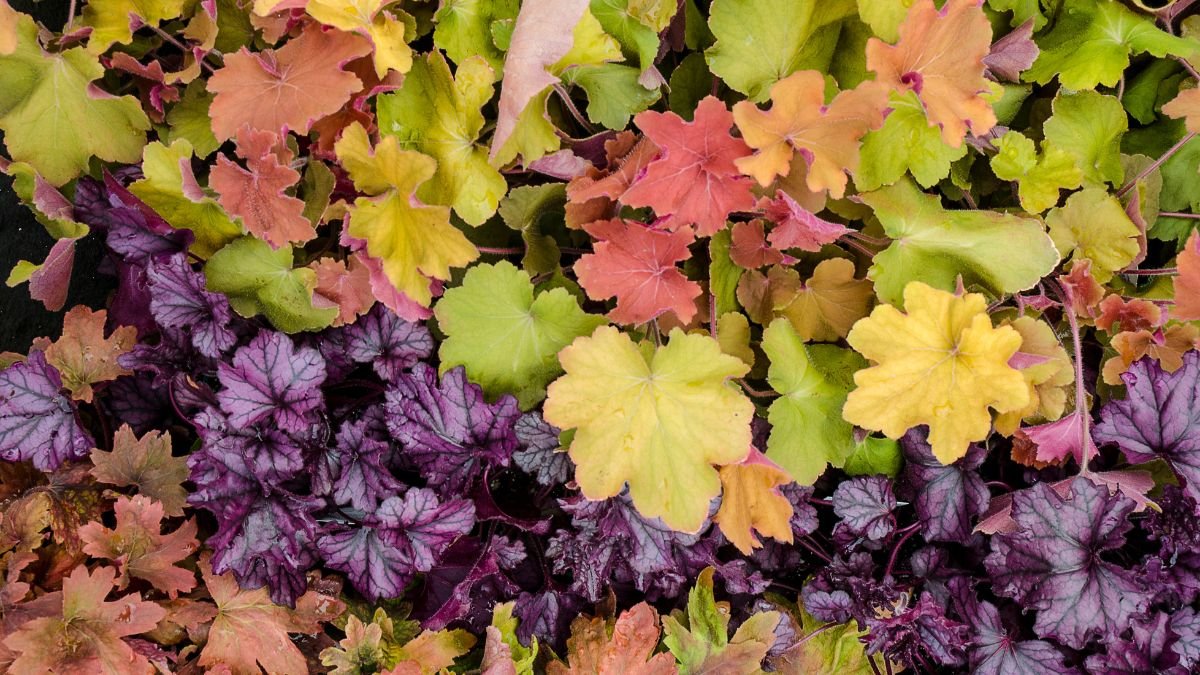
With leaves in shades of purple, lime, silver, and even near-black, coral bells add color even when not in bloom. Some types flourish in shade, while others handle full sun; just check the cultivar’s preferences.
Delicate flower spikes appear in early summer, attracting hummingbirds. The foliage remains eye-catching through fall, often deepening in shade as temperatures drop. Well-draining soil is fundamental to prevent crown rot.
Use them to brighten shady corners or contrast with finer-textured plants like ferns. They’re also great in containers, where their colors can be appreciated up close.
11. Lithodora
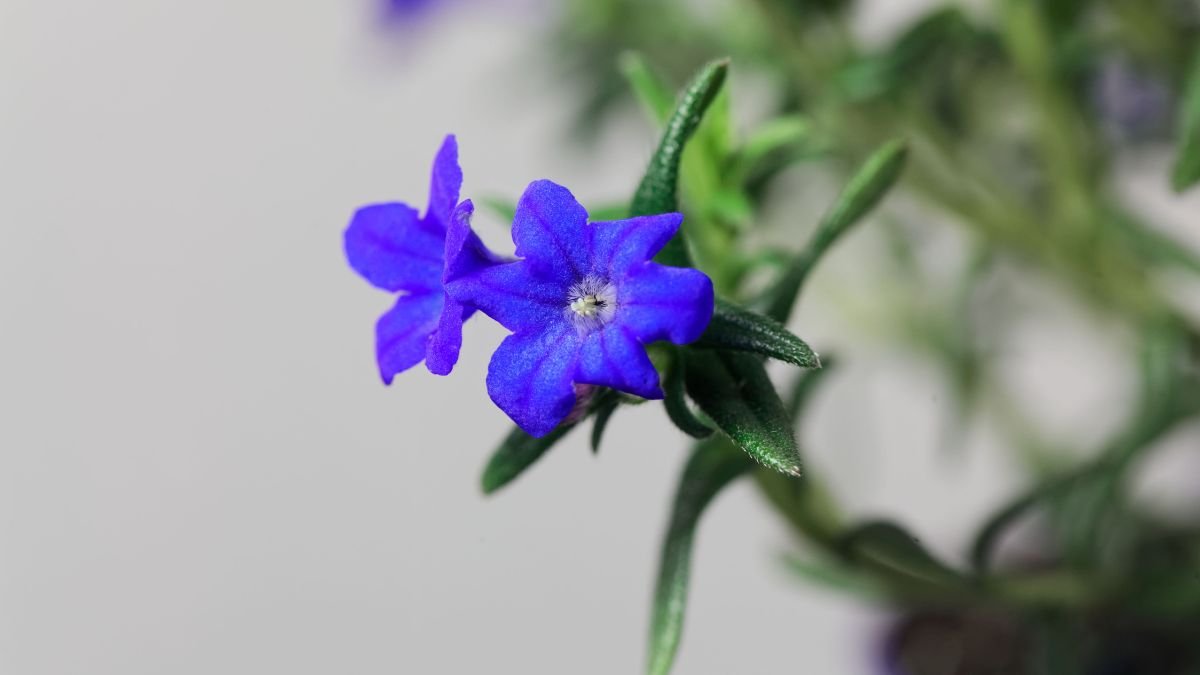
Few groundcovers provide such an intense burst of blue as lithodora. From late spring through summer, it covers itself in striking, star-shaped flowers that look almost electric against the dark green foliage. The evergreen leaves maintain interest year-round, making it valuable beyond its blooming season.
While it performs best with at least six hours of sun, lithodora adapts to partial shade, especially in hot climates where afternoon protection prevents scorching. Well-drained, slightly acidic soil helps it thrive. It shows impressive drought tolerance, though occasional watering during dry spells keeps it looking fresh.
This low-growing spreader works beautifully cascading over rock walls or edging pathways. Pair it with yellow-blooming companions like creeping jenny for a striking color contrast.
12. Snow-in-Summer
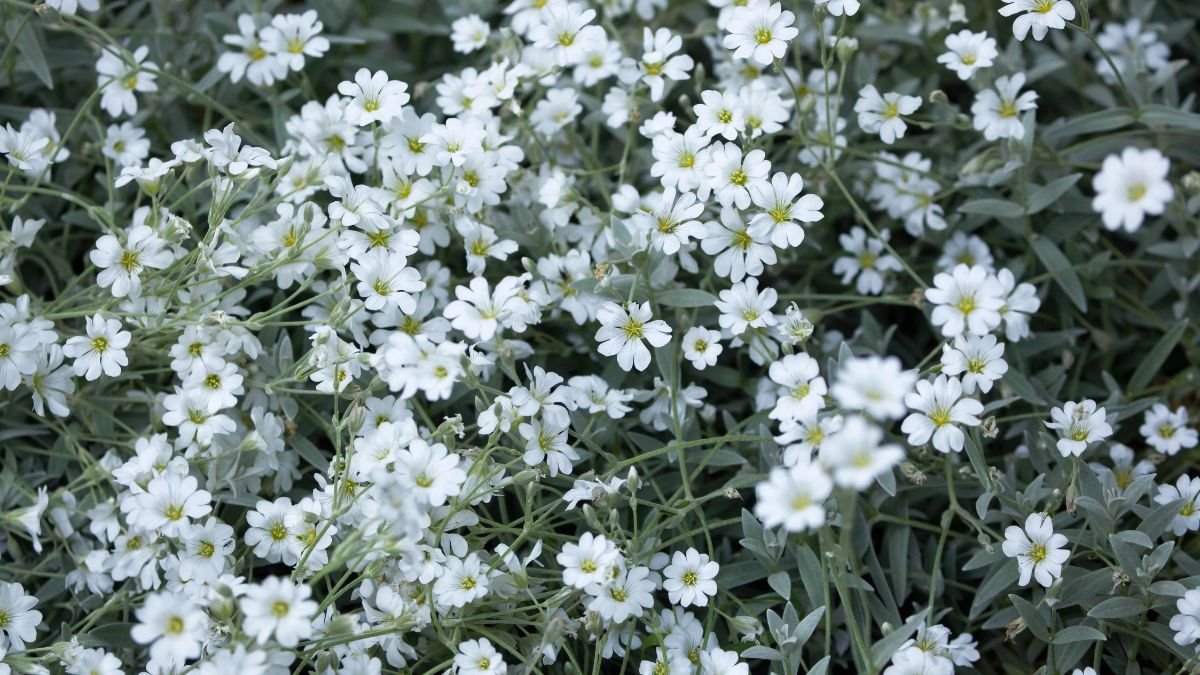
Its silver leafage shines in the garden even before this plant bursts in a blizzard of white blooms come early summer. The woolly leaves form a dense mat that stifles weeds while adding texture to rock gardens. Full sun boosts the most prolific flowering, but it manages in light shade too.
This tough plant handles poor, rocky soil with ease, making it ideal for challenging spots where other plants struggle. After blooming, a light trim keeps it tidy and may prompt a second flush of flowers. Avoid rich soil or excessive water, which can cause floppy growth.
Use it to create contrast with darker-leaved plants or let it spill between stepping stones. The fuzzy foliage remains attractive even when not in bloom, providing year-round visual interest in mild climates.
13. Dwarf Fountain Grass
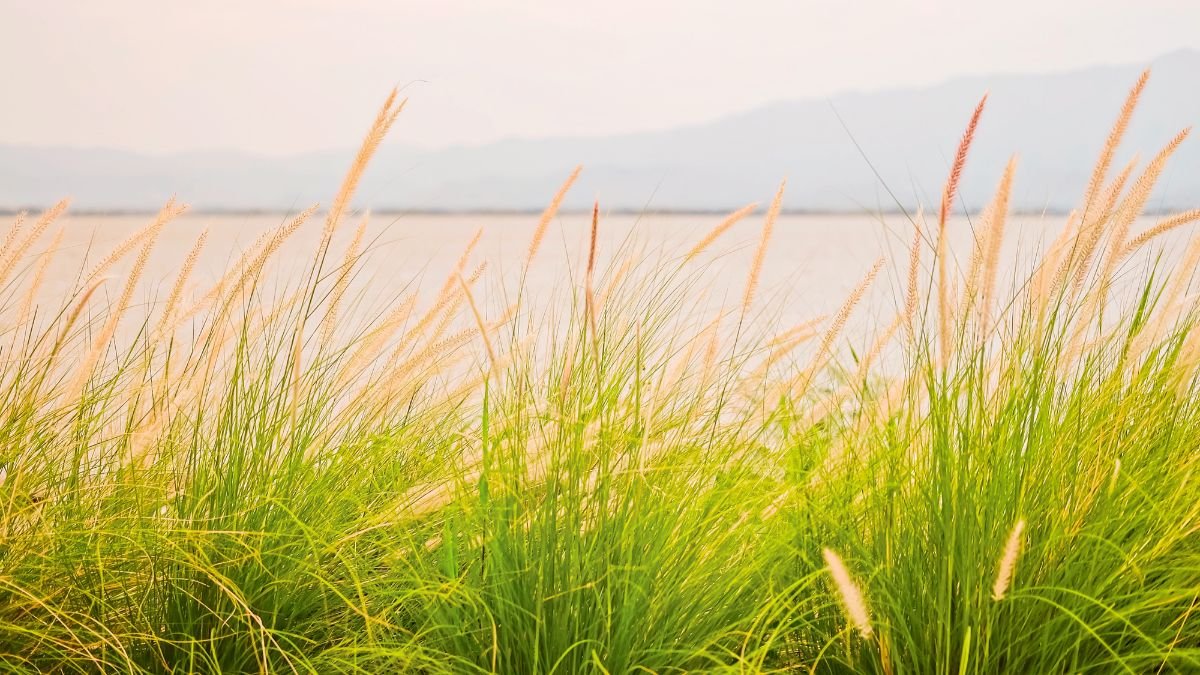
At just 12-18 inches tall, this miniature ornamental grass adds movement and consistency without overwhelming small spaces. Fluffy, bottlebrush-like flowers appear in late summer, catching the light beautifully when backlit by the sun. While it blossoms in full sun, it tolerates partial shade better than many grasses.
The arching foliage turns golden in fall, extending seasonal interest. Unlike larger grasses, ‘Little Bunny’ maintains a neat, compact form that won’t invade neighboring plants. It handles drought once established but appreciates occasional watering during extreme heat.
Plant it where its delicate seed heads can catch the breeze, or use it to soften the edges of stone features. Combine with late-blooming perennials like sedum for a vibrant autumn display.
14. Japanese Painted Fern
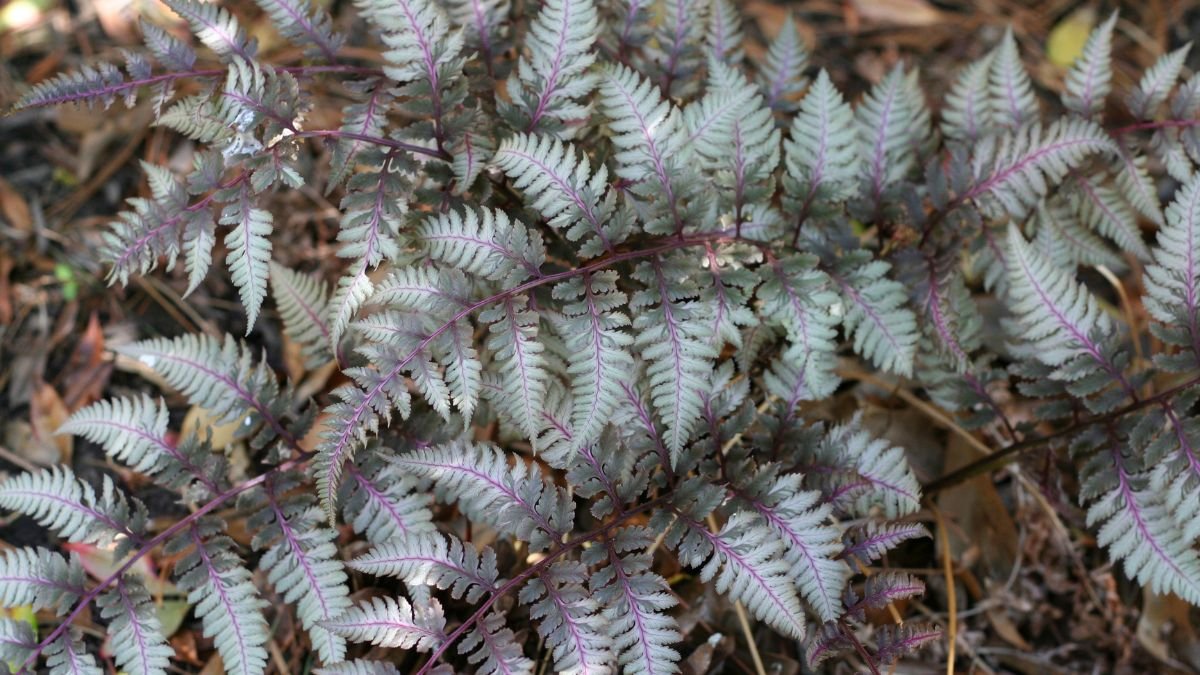
With its metallic silver fronds accented by purple veins, this fern brings unexpected color to shady spots. The foliage shimmers in dappled light, creating a luminous effect in dark corners. While it favors shade, morning sun enriches its vibrant hues without burning the delicate leaves.
Unlike many ferns, it adapts well to container growing, making it adaptable for patio gardens. The clumping habit keeps the plants tidy without spreading aggressively. Consistent moisture yields the lushest growth, though it rebounds well from occasional dry spells.
Use it to brighten shadowy areas under trees or combine it with hostas for contrasting foliage textures. In colder zones, the fronds die back in winter but return reliably each spring.
15. Dwarf Lavender
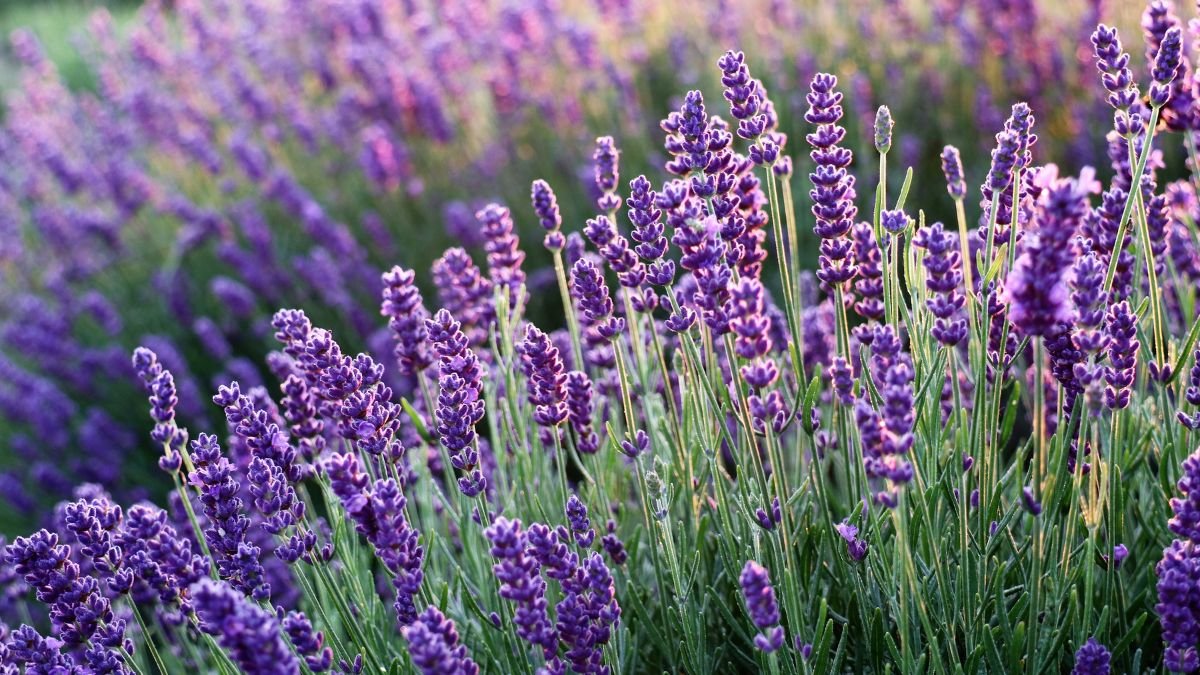
‘Hidcote’ tops out at about 18 inches, making it ideal for small rock gardens. The fragrant purple spikes flower in midsummer, attracting pollinators while discouraging deer and rabbits. Full sun produces the most flowers, but it manages in light shade if the soil drains exceptionally well.
This woody perennial develops a lovely mounded form with silvery foliage that remains attractive year-round in mild climates. Good air circulation helps prevent fungal issues, so avoid overcrowding. Prune lightly after flowering to maintain shape.
Plant it near seating areas to enjoy the calming fragrance, or use it to edge sunny paths. Its drought-tolerant nature makes it excellent for xeriscaping, and the flowers dry beautifully for crafts.

